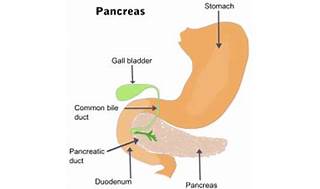A nurse in an emergency department is caring for a client.
The nurse is preparing to discharge the client. Which of the following statements by the client indicate an understanding of the discharge teaching?
Select all that apply.
"I will eat fish for dinner at least twice per week.".
"I will limit my morning coffee to no more than two cups.".
"I will eat small, frequent meals.".
"I should expect my bowel movements to be pale in color".
"I will notify my provider if my urine is dark.".
Correct Answer : C,D,E

The correct answer is choice CDE.
Choice A rationale:
Eating fish for dinner at least twice per week is not specifically recommended for pancreatitis patients. A low-fat diet is generally advised, but the frequency of fish consumption is not a key point in discharge teaching.
Choice B rationale:
Limiting coffee intake is not a primary focus in pancreatitis discharge instructions. While caffeine can irritate the digestive system, the emphasis is more on avoiding alcohol and fatty foods.
Choice C rationale:
Eating small, frequent meals is recommended to avoid overloading the digestive system and to help manage symptoms of pancreatitis.
Choice D rationale:
Pale bowel movements can indicate a problem with bile flow, which is not a normal expectation for pancreatitis patients. This could suggest a complication that needs medical attention.
Choice E rationale:
Dark urine can be a sign of dehydration or liver issues, which should be reported to a healthcare provider as it may indicate a complication.
Nursing Test Bank
Naxlex Comprehensive Predictor Exams
Related Questions
Correct Answer is A
Explanation
Answer and explanation.
The correct answer is choice A. A nontender, protruding abdomen is a normal finding for a 2year-old toddler. This is due to the immature development of the abdominal muscles and the relatively large size of the liver and kidneys in relation to the rest of the body.
Choice B is wrong because the head circumference should be equal to or less than the chest circumference by age 2. A head circumference that exceeds the chest circumference could indicate hydrocephalus or other neurological problems.
Choice C is wrong because the fontanels, or soft spots on the skull, should be closed by age 18 months. Palpable fontanels could indicate dehydration, malnutrition, or congenital disorders.
Choice D is wrong because the natural loss of deciduous teeth, or baby teeth, usually begins around age 6. Premature loss of teeth could indicate dental caries, trauma, or endocrine disorders.
Correct Answer is B
Explanation
The correct answer is B.
Choice A reason: Completing oral hygiene is important for overall health, especially for individuals with cystic fibrosis, as they are at a higher risk for dental problems due to thick mucus that can harbor bacteria. However, oral hygiene does not have a direct impact on the effectiveness of postural drainage. Postural drainage is a technique used to clear mucus from the lungs, and while maintaining oral hygiene is beneficial, it is not a prerequisite for this procedure.
Choice B reason: Using a bronchodilator, such as an ibuterol inhaler, is recommended before postural drainage because it helps to open the airways, making the procedure more effective. Bronchodilators work by relaxing the muscles around the airways, which can become constricted in conditions like cystic fibrosis. This relaxation allows for easier clearance of mucus during postural drainage.
Choice C reason: Pancrelipase is an enzyme supplement used to aid digestion in patients with cystic fibrosis, who often have pancreatic insufficiency. While taking pancrelipase is crucial for nutrient absorption, it is not specifically related to the respiratory treatment of postural drainage. Therefore, it is not necessary to take pancrelipase immediately before this procedure.
Choice D reason: Eating a meal before postural drainage is not recommended. The procedure involves placing the body in positions that facilitate the drainage of mucus from the lungs due to gravity. Having a full stomach can cause discomfort, increase the risk of vomiting, and may hinder the effectiveness of the drainage. It is best to perform postural drainage when the stomach is empty, either before meals or at least 1.5 hours after eating.

Whether you are a student looking to ace your exams or a practicing nurse seeking to enhance your expertise , our nursing education contents will empower you with the confidence and competence to make a difference in the lives of patients and become a respected leader in the healthcare field.
Visit Naxlex, invest in your future and unlock endless possibilities with our unparalleled nursing education contents today
Report Wrong Answer on the Current Question
Do you disagree with the answer? If yes, what is your expected answer? Explain.
Kindly be descriptive with the issue you are facing.
